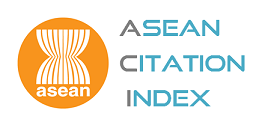Is the Modern Middle Class the Proletariat?: Marx's Concept of the Proletariat Class
Keywords:
Karl Marx, Capitalism, Proletariat class, Middle class, Class consciousnessAbstract
Karl Marx predicts that an advanced capitalist society would end up with class polarization between the very small number of the rich capitalist class and the very large number of the poor proletariat class. There seems to be no place for the modern middle class who sells their labours for wages or incomes but has different ways of life and a better standard of living than the working class. However, the social reality after Marx's time seems to contradict his prediction – the quite stable existence of the modern middle class makes Marx's prediction untrue. Some scholars who claim themselves as Marxists would argue that the modern middle class should be counted as the proletariat class, and so, Marx's prediction still holds in the present time. This paper argues that, according to Marx, the modern middle class cannot be counted as the proletariat class. It proposes a distinction between the proletariat class in general and the revolutionary proletariat class, in which when Marx discusses class polarization he always refers to the latter kind only. The modern middle class may be viewed as the proletariat class in general but cannot be counted as the revolutionary proletariat class because they do not have objective conditions such as collective benefits and ways of life that would allow them to develop class consciousness for a socialist revolution. The revolutionary proletariat class, according to Marx, refers only to the factory worker whose work and way of life are forced to live together and to aim for the same goal – a socialist revolution; they would want to destroy the alienation between the actual alienated life and the real human essence.
Downloads
Published
How to Cite
Issue
Section
License
The opinions and ideas expressed in all submissions published in Thammasat Review are solely that of the author(s) and do not necessarily reflect that of the editors or the editorial board.
The copyright of all articles including all written content and illustrations belong to Thammasat Review. Any individuals or organisation wishing to publish, reproduce and distribute a particular manuscript must seek permission from the journal first.








